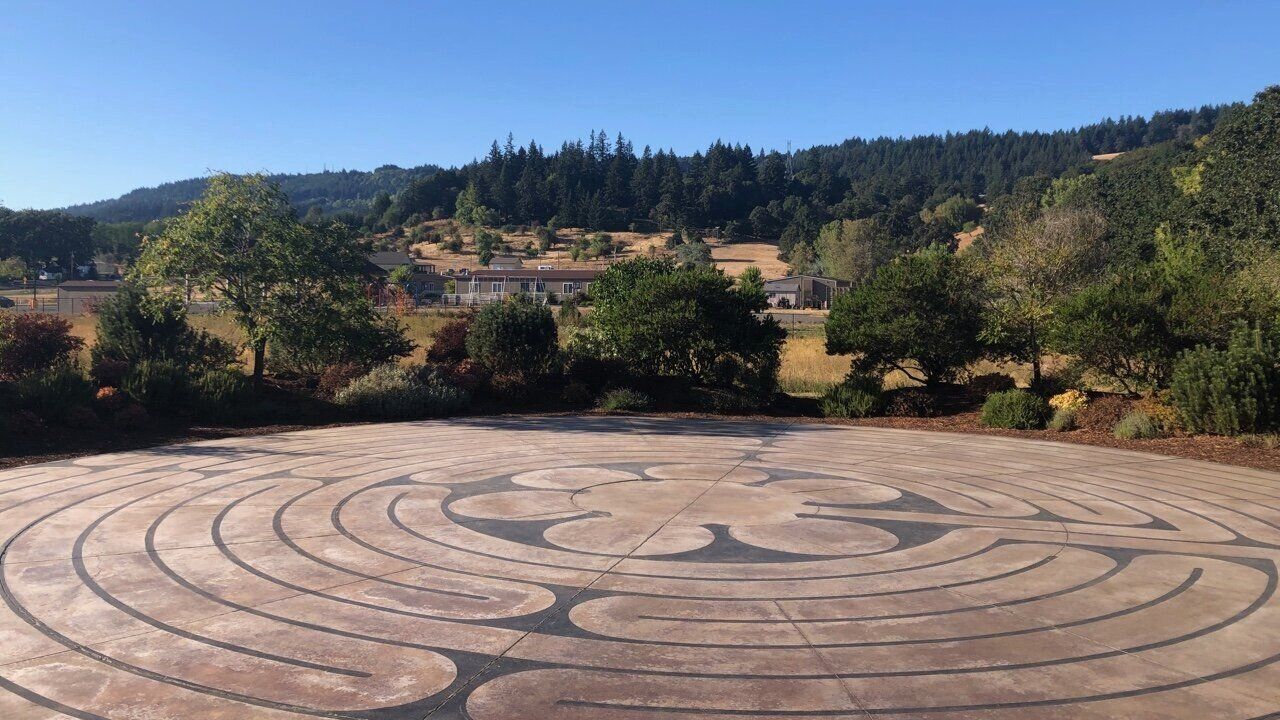Pilgrimage at Home
Mar 22
/
Terri Conlin

“Pilgrims are people in motion passing through territories not their own – seeking something we might call completion or clarity, a goal to which only the Spirit’s compass points the way. Our bodies are vehicles of passage.”[1] - H. Richard Niebuhr
My daily habit is to walk fast and furious along the river near my home. I walk as if I have someplace to go. But as sheltering-in-place orders of COVID-19 dragged on, I noticed I was restless for another kind of walking. My heart was aching for deeper movement, the slower pace of moving toward a still center.
My whole body was longing to walk as a pilgrim and it is a different kind of pilgrimage.
How can we be pilgrims when we cannot physically travel to a holy place?
I kept fast-walking along the river every day. Even so, I was searching for slow.
Susan S. Phillips writes, “A pilgrimage is akin to Sabbath in allowing a spiritual fallowness, a time of emptying our minds and hands with the hope of spiritual replenishment.”[2]
I had stumbled onto something I was craving - moving my body toward the heart of God.
It turns out this kind of walking landed me in good company. A.J. Swoboda points out that “the Bible begins with walking”.[3] God Himself walked. Jesus, too. Scripture is full of walkers: Abraham, Hagar, Moses, Ruth and Naomi, the Magi, Mary, Joseph and Jesus. None of them walked alone, but invited companions to accompany or meet them en route. Even after his resurrection, Jesus walked alongside people on the road.
Pilgrimage can take many physical forms – mountain climbing, canyon hiking, moving home or away, or beyond walking to sky or sea. Noah and Jonah were both sea travelers but only one was a pilgrim. These travelers all took a physical journey to another land yet, the bigger point was the deeper inward journey toward the heart of God.
Another form of pilgrimage is a road trip. One friend of mine rides his Harley cross-country, stopping for rest and prayer at monasteries along the way. The monks may not know what to make of this stranger sprawled out on their lawn, asleep in leather chaps, weird and welcomed. Hospitality, rest, and a willingness to be surprised are hallmarks of pilgrimage.
A pilgrimage is more than a trip. It risks leaving what you know, being a stranger in unfamiliar land, accepting hospitality, encountering God and yourself, and being changed deeply by the journey.
My yearning for pilgrimage felt upside down in that I was looking for it in a familiar land. I was searching for it near home.
I drove to an outdoor labyrinth in the small town where my daughter used to live. Pausing on the threshold between the crushed stone and the pattern painted on smooth concrete. I picked up a stone. Caught my breath. And walked in.
In step with my breath, I wound my way to the center rubbing the stone to warmth in my hand. In the central flower I sat down, listening until my insides stilled. Then stayed beyond the still point. I left the stone and unwound slowly back the way I had come, opening empty hands.
The labyrinth is tailor made for such an inward journey. Labyrinths are ancient spiral forms found in every religion. During the Middle Ages, when Christian pilgrimages to Rome or Jerusalem could not be undertaken due to danger, plague, and poverty, the Catholic Church built substitutes into the floors of cathedrals throughout Europe.[4] The one I walked in the countryside was a copy of the one in Chartres Cathedral.
Labyrinths can typically be found in churches, hospitals, gardens, university campuses, and monasteries. You might be surprised to find one near you.[5] When I drove home from my labyrinth pilgrimage, I felt swept clean, connected to my body, and fully aware of my deep longing to be near the people and God I love.
My labyrinth walk was an embodied form of contemplative prayer with three similar stages: Release, Rest and Return.
Of course, you don’t need a labyrinth to take a pilgrimage. Step into your inner landscape toward the God who knows and loves you best, and expect to be surprised.
As we travel, may we take the prayer of a fellow pilgrim,
The Prayer of St Brendan the Navigator
Help me journey beyond the familiar
and into the unknown.
Give me the faith to leave old ways
and break fresh ground with You.
Christ of the mysteries, I trust you
to be stronger than each storm within me.
I will trust in the darkness and know
that my times, even now, are in Your hand.
Tune my spirit to the music of heaven,
and somehow, make my obedience count for you.[6]
Notes:
1 Niebuhr, Richard R. "Pilgrims and Pioneers." Parabola, 1984: 4-7.
2 Phillips, Susan S. "Narrative and Pilgrimage: Forming our Stories in the Company of Others." Crux, Fall 2020: 13.
3 Swoboda, A.J. The Dusty Ones. Grand Rapids: Baker Books, 2016: 97.
4 Artress, Lauren. Walking a Sacred Path. New York: Riverhead Books, 2006.
5 World Wide Labyrinth Locator. March 4, 2021. https://labyrinthlocator.com/locate-a-labyrinth (accessed March 4, 2021).
6 Paintner, Christine Valters. Illuminating the Way- Embracing the Wisdom of Monks and Mystics. Notre Dame: Sorin Books, 2016.

Terri Conlin
Terri Conlin is a certified Spiritual Director, writer, and occasional preacher. She has a BA in Architecture from the University of Texas at Austin and a MA in Spiritual Formation from Portland Seminary. She thrives when creativity and resilience flourish together in God’s sheltering places. Terri and her husband live among the rainy firs of Oregon. They have four grown children and seven feisty grandchildren she calls the Wonders. Most days you can find her outside walking or writing about spiritual formation while sipping dark roast coffee in a thrifted mug. https://www.terriconlin.com/
Terri Conlin is a certified Spiritual Director, writer, and occasional preacher. She has a BA in Architecture from the University of Texas at Austin and a MA in Spiritual Formation from Portland Seminary. She thrives when creativity and resilience flourish together in God’s sheltering places. Terri and her husband live among the rainy firs of Oregon. They have four grown children and seven feisty grandchildren she calls the Wonders. Most days you can find her outside walking or writing about spiritual formation while sipping dark roast coffee in a thrifted mug. https://www.terriconlin.com/

